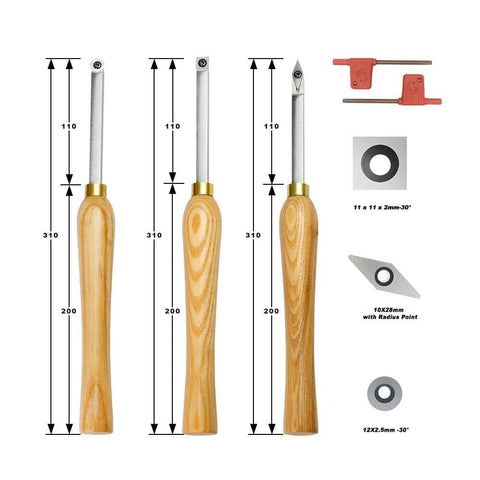|
Woodturing is a captivating craft that allows artisans to shape and transform raw wood into beautiful objects. While a wood turning lathe is the traditional tool of choice for this technique, not everyone has access to one. Fortunately, there are alternative methods and tools available that can be used to achieve similar results. In this article, we will explore some viable alternatives to a wood turning lathe, discussing their features, advantages, and considerations.
Handheld Woodturning Tools
One of the simplest alternatives to a lathe is using hand tools. These tools, such as gouges, chisels, and scrapers, can be used to shape and carve wood manually. While this method requires more skill and patience, it allows for intricate and detailed work. Handheld tools offer versatility and can be used on smaller pieces or for specific projects where a lathe is not available. However, it is important to note that achieving consistent and symmetrical shapes may be more challenging without the support and stability provided by a lathe.
Bow Lathe
A bow lathe is a primitive yet effective alternative to a traditional wood turning lathe. It consists of a simple setup with a wooden bow and a cord wrapped around the workpiece. By pulling and releasing the bow, the wood piece rotates, allowing for shaping and carving. Bow lathes are particularly suitable for small-scale projects and are often used in traditional and historical woodworking practices. While it requires some practice to achieve control and precision, a bow lathe can provide a valuable introduction to woodturning techniques.
Electric Drill Setup
Another alternative is to set up an electric drill as a makeshift lathe. This method involves mounting the wood piece securely between centers and using a drill attached to a tool rest. By carefully controlling the speed and movement of the drill, you can achieve rotational motion similar to that of a lathe. This setup allows for basic shaping and sanding operations. However, it is important to note that an electric drill may not offer the same level of control and stability as a dedicated lathe, limiting the complexity and size of the projects you can undertake.
CNC Router
For those with access to a computer numerical control (CNC) router, it can be a viable alternative for certain woodturning applications. While a CNC router is primarily used for milling and cutting operations, it can be programmed to create intricate woodturning designs. By utilizing specialized tooling and programming software, a CNC router can replicate the rotational motion and cutting actions of a lathe. This method offers precise control and the ability to create complex geometries, making it suitable for detailed woodturning projects. However, it is important to note that not all CNC routers may have the necessary capabilities or software to perform woodturning tasks.
While a wood turning lathe is the preferred tool for woodturning, there are alternative methods available for those without access to one. Handheld woodturning tools offer versatility and control, albeit requiring more skill and patience. A bow lathe provides a primitive but effective approach for small-scale projects. Setting up an electric drill as a makeshift lathe can be a basic solution for shaping and sanding operations. Lastly, a CNC router, if available, can be programmed to replicate woodturning actions. Each alternative has its advantages and considerations, and the choice depends on the specific needs, resources, and skill level of the woodturner. With creativity and adaptability, you can still enjoy the art of woodturning even without a dedicated lathe.
|
